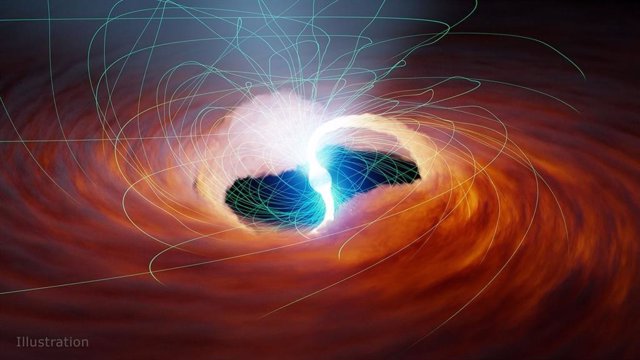11 Apr. (EUROPE PRESS) –
NASA’s NuSTAR space observatory has confirmed that cosmic ultraluminous X-ray (ULX) sources they are as bright as they appear and exceed the Eddington limit.
This is the point at which the luminosity emitted by an active star or galaxy is so extreme that it begins to eject the outer layers of the object. These X-ray sources regularly exceed this limit, which limits an object’s brightness as a function of its mass, by 100 to 500 times, leaving scientists baffled.
The investigation, published in The Astrophysical Journal, suggests that this boundary-breaking brightness is due to the ULX’s strong magnetic fields. But scientists can prove this idea only through observations: Up to billions of times more powerful than the strongest magnets ever made on Earth, ULX magnetic fields cannot be reproduced in a laboratory.
Particles of light, called photons, exert a small push on the objects they encounter. If a cosmic object like an ULX emits enough light, the outward pull of the photons can overcome the inward pull of the object’s gravity. When this happens, an object has reached the Eddington limit, and in theory light from the object will push any gas or other material that falls towards it.
That change, when light overcomes gravity, is significant, because the material falling on an ULX is the source of its glow. This is something scientists often see in black holes: When stray gas and dust are pulled in by their strong gravity, those materials can heat up and radiate light. Scientists used to think that ULXs must be black holes surrounded by glowing chests of gas.
But in 2014, NuSTAR (Nuclear Spectroscopic Telescope Array) data revealed that an ULX by the name of M82 X-2 is actually a less massive object called a neutron star. Like black holes, neutron stars form when a star dies and collapses. packing more than the mass of our Sun into an area not much larger than an average-sized city.
This incredible density also creates a gravitational pull on the neutron star’s surface about 100 trillion times stronger than the gravitational pull on Earth’s surface. The gas and other material pulled by that gravity is accelerated at millions of miles per hour, releasing tremendous energy when they hit the surface of the neutron star. (A marshmallow falling on the surface of a neutron star would hit it with the energy of a thousand hydrogen bombs.) This produces the high-energy X-ray light that NuSTAR detects.
The recent study pointed to the same ULX at the heart of the 2014 discovery and found that, like a cosmic parasite, M82 X-2 is stealing about 9 trillion trillion tons of material per year from a neighboring star, or about one times and a half the mass of the Earth. Knowing how much material hits the neutron star’s surface, scientists can estimate how bright the ULX should be, and their calculations match independent measurements of its brightness. The work confirmed that M82 X-2 exceeds the Eddington limit, reports NASA.
If scientists can confirm the brightness of more ULXs, they may confirm a persistent hypothesis that would explain the apparent brightness of these objects without the ULXs having to exceed the Eddington limit. That hypothesis, based on observations of other cosmic objects, postulates that strong winds form a hollow cone around the light source, concentrating most of the emission in one direction. If it points directly at Earth, the cone could create a kind of optical illusionmaking it falsely appear as if the ULX is exceeding the brightness limit.
Even if that’s the case for some ULXs, an alternate hypothesis supported by the new study suggests that strong magnetic fields distort roughly spherical atoms into elongated, stringy shapes. This would reduce the ability of the photons to push the atoms away and ultimately would increase the maximum possible brightness of an object.











![[Img #74674]](https://thelatestnews.world/wp-content/uploads/2024/12/Santiago-Ramon-y-Cajal-The-promoter-of-modern-neuroscience-300x200.jpg)